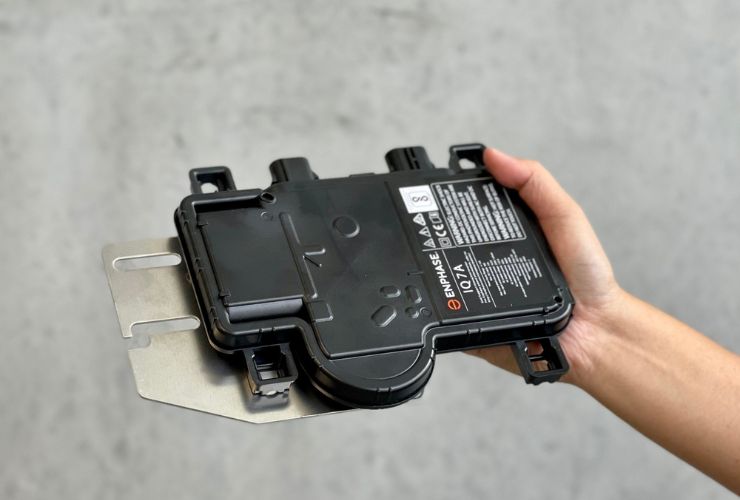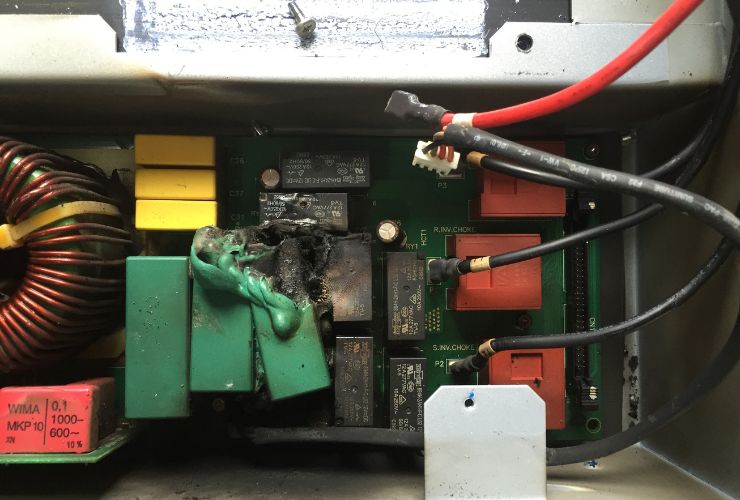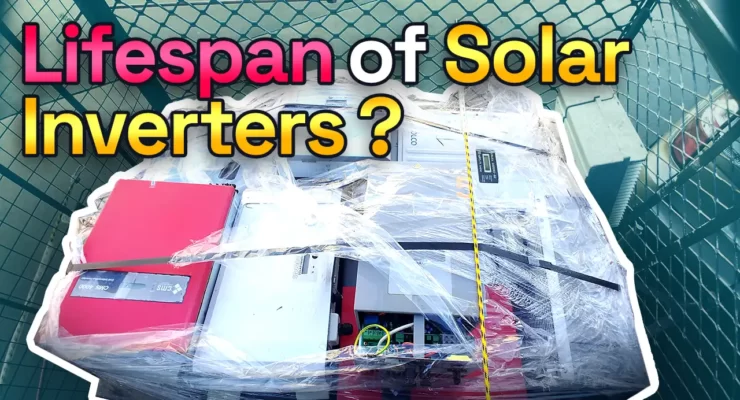Fast read
The solar inverter is vital for your solar power system, converting the sun's energy into usable electricity. Its lifespan often mirrors its warranty, typically ranging between 5-10 years, though some premium brands like SMA, Fronius, Enphase and Sungrow have inverters that have lasted over a decade.
Cheaper solar inverters may fail earlier; for instance, many bought between 2010 and 2012 needed replacements by 2014. If repair is necessary, a technician might take the solar inverter, leaving your solar system non-operational. Quality microinverters and optimisers, like those from Enphase, can last over 10 years in hot climates.
Solar inverters usually fail from prolonged exposure to heat; installation in cooler locations can extend their life. Upgrading is sometimes more cost-effective than repairing old models.
How long should you expect your solar inverter to last?
At the heart of any solar system lies the solar inverter. This key device transforms the direct current (DC) generated by the solar panels into an alternating current (AC). AC power is usable by the majority of appliances in your home. Therefore, you want a high-quality solar inverter that lasts a long time. But just how long do solar inverters last, and what about optimiser or Enphase microinverters?
How long do solar inverters last?
Looking at the warranty of a product can be one indication of how long you should expect it to last. Typically, most quality solar inverters are engineered to work between 10 and 15 years. However, certain premium models, installed in a shady location might exceed this.
With technological advancements, we can expect even longer lifespans from newer solar inverter models. Some solar inverters have warranties of up to 15 years. For these products, you will be paying more of a premium.
Today, there are inverters in Australia from brands such as SMA and Fronius that have been performing at a high level for more than a decade.
When searching for a solar PV system with an inverter, you might find some at enticingly low prices. Yet, many individuals who bought and installed these inexpensive solar inverters had poor experiences. When these came onto the market the first time between 2010 and 2013 many purchasers found themselves needing replacements only 1 or 2 years later.
The problem with replacing them
If you are to purchase a cheap solar inverter and come across an issue with its performance, often the unit is a write-off. While you wait for a replacement unit to arrive (if one arrives) you’re left with a solar power system that doesn’t deliver any power.
As the customer, you should push to insist that if the solar inverter needs to be repaired off-site, you receive a swap-in unit. This means your solar system is still operational, while your original solar inverter gets fixed. This is something you should go over before committing to an off-site repair of your inverter.

Microinverters and optimisers
Microinverters and optimisers sit on roofs under the panel and are engineered to endure hot climates. In fact, high-quality manufacturers like Enphase and Solaredge have tested their microinverters and optimisers in Australia for many years in real-life installations, and they have operated trouble-free on hot roofs for a decade plus.
To reflect this, in Australia Enphase have put a 10-year warranty on their microinverters installed since April 20, 2020. For optimisers, SolarEdge provides a product warranty of 25 years on their power optimisers in Australia.
What causes a solar inverter to stop working?
No solar inverter is immortal. A whole range of reasons can cause an inverter, microinverter, or optimiser solution to stop operating. Here are the top reasons, and again a cheap inverter is much more likely to die an early death for one of these reasons.
Water enters the electronics
Most installers place solar inverters outside, and typically, these devices come with an IP54 rating or higher, indicating their weatherproof nature. However, electronics and moisture form a bad combination. When water enters the inverter, it can cause short circuits or corrosion. This infiltration can result from damaged seals, direct water exposure, cracks in the housing, or placement in areas vulnerable to floods or heavy water flow, like from an overflowing gutter.
Overheating damages components
Solar inverters inherently produce significant heat. If continuously exposed to sunlight and lacking proper ventilation, an inverter can overheat. This overheating reduces efficiency and can lead to early failure. Some main causes include objects obstructing the solar inverter’s ventilation slots, preventing adequate airflow; relentless exposure to direct midday sunlight, when the inverter works hardest, or elevated ambient temperatures, such as those reflected from nearby walls or surfaces.
Component degradation
All electronic components, from capacitors and resistors to transformers, experience wear over time. Therefore as with all electronic devices, there’s a natural end to a solar inverter’s lifecycle where components degrade and become less efficient. Constant exposure to the elements over the years will inevitably wear down some components, even if they were top-notch at the outset.
Early component failures can arise from the use of cheaper subpar components or even voltage spikes and lightning strikes.
Software glitches
Contemporary inverters boast advanced software to enhance high efficiency. However, like all software, it’s not immune to bugs. Such glitches can lead to firmware issues because of incompatibilities, failure of software updates, or outdated software versions causing issues.

Manufacturing defects
Occasionally, a product can have inherent issues from the manufacturing process, and quality control is not the same for every manufacturer. In the past some cheap solar inverters when one ordered 100, actually 105 arrived, to make up for the models that we likely to be already dead on arrival. In this instance, many defects slipped through, because the quality control processes were not stringent.
Corrosion and environmental factors can affect how long a solar inverter lasts
Salt exposure is not a friend of inverter solutions. Especially in coastal areas, the salt in the air can enter the equipment and lead to corrosion, affecting the inverter’s overall lifespan. Proximity to industrial areas or regions with high chemical pollutants can also have a corrosive effect on the solar inverter’s interior components.
Dust and debris accumulation
Heavy dust can clog up the inverter’s ventilation systems, leading to overheating issues. Also over time, debris such as autumn leaves might cause physical blockages, hampering the inverter’s performance.
Grid instabilities
Solar inverters are like a stable grid. Inconsistent voltage from the grid over a period can cause the inverter to malfunction. For example, pushing the inverter to handle more power than its capacity can result in system failures. Into the same group fall unexpected power surges: Sudden increases in power demand especially if frequent can strain and damage the inverter.
In summary – A solar inverter can last…
As you can see there are many factors to take into consideration when looking at how long a solar inverter can last. Sometimes it is as simple as poor install practice. Unfortunately, cheap solar inverters are much more likely to break down based on one of the factors outlined above, than quality gear.
While designed for long-term use, quality solar inverters, optimisers, and microinverters are not exempt from environmental and operational challenges. By ensuring proper installation, regular maintenance, and timely software updates, the life and efficiency of these crucial solar components can be maximised.



